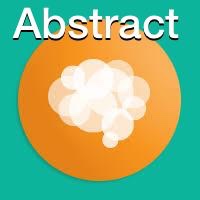Asymptomatic spinal dural arteriovenous fistula: case series and systematic review.
Abstract
OBJECTIVE:
Spinal dural arteriovenous fistulas (SDAVFs) commonly present with symptoms of myelopathy due to venous congestion in the spinal cord; asymptomatic SDAVFs are rarely encountered. To elucidate the clinical characteristics of asymptomatic SDAVFs, the authors present 5 new cases of asymptomatic SDAVF and report the results of their systematical review of the associated literature.
METHODS:
Five databases were systematically searched for all relevant English-language articles on SDAVFs published from 1990 to 2018. The clinical features and imaging findings of asymptomatic SDAVFs were collected and compared with those of symptomatic SDAVFs.
RESULTS:
Twenty cases, including the 5 cases from the authors’ experience, were found. Asymptomatic SDAVFs were more prevalent in the cervical region (35.0%); cervical lesions account for only 2% of all symptomatic SDAVFs. The affected perimedullary veins tended to drain more cranially (50.0%) than caudally (10.0%). Four cases of asymptomatic SDAVF became symptomatic, 1 case spontaneously disappeared, and the remaining 15 cases were unchanged or surgically treated.
CONCLUSIONS:
The higher prevalence of asymptomatic SDAVFs in the cervical spine might be a distinct feature of asymptomatic SDAVFs. Given that venous congestion is the pathophysiology of a symptomatic SDAVF, abundant collateral venous pathways and unique flow dynamics of the CSF in the cervical spine might prevent asymptomatic cervical SDAVFs from becoming symptomatic. In cases in which venous congestion is avoidable, not all asymptomatic SDAVFs will become symptomatic.
KEYWORDS:
CCJ = craniocervical junction; SDAVF = spinal dural arteriovenous fistula; asymptomatic; spinal arteriovenous fistula; symptomatic; systematic review; vascular disorders
- PMID:
- 31323622
- DOI:
- 10.3171/2019.5.SPINE181513


